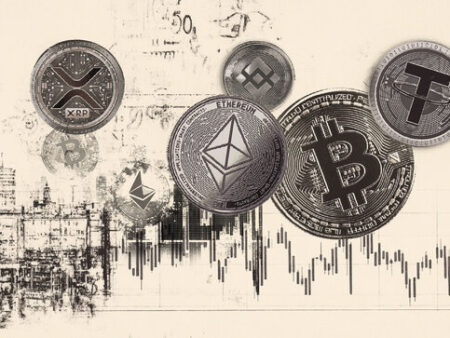Ethereum Price Consolidates Gains Amidst Institutional Interest
Ethereum (ETH) is currently trading at $3,803, experiencing a slight pullback after a recent surge. The leading smart contract token by market capitalization had previously extended its bullish trend, reaching an intraday high of $3,941 before retracing to an intraday low of $3,773.
Institutional demand for Ethereum as an alternative investment asset has been a significant driver, with inflows reaching $1.59 billion last week, according to a CoinShares report. In contrast, Bitcoin (BTC) saw minor outflows totaling $175 million.
If institutional and retail interest remains steady in the coming days and weeks, Ethereum could sustain its upward momentum, aiming to close the gap with its all-time high of $4,878. The derivatives market reflects this interest, with futures open interest (OI) holding steady at peak levels of $58 billion.
BTCS Increases Ethereum Holdings with Significant Purchase
BTCS Inc. (BTCS), a blockchain technology-focused company, announced on Monday the purchase of an additional 14,240 ETH at an average price of $3,850. This acquisition brings their total holdings to 70,028 ETH, valued at approximately $270 million.
The company, also known as Blockchain Technology Consensus Solutions, has closed its $10 million offering of convertible notes, structured at a conversion price of roughly $13 per share.
BTCS CEO Charles Allen stated that the company’s Decentralized Finance (DeFi)/Traditional Finance (TradFi) Acceleration strategy has been strengthened and will continue to generate revenue and returns for shareholders, utilizing staking protocols such as NodeOps and Builder+.
“We are hitting our stride in actively deploying capital not only to expand our ETH treasury but also to fuel our blockchain infrastructure operations, and we are proud to continue our trajectory as the most financially and operationally leveraged Ethereum play in the public markets today,” Allen said in the press release.
BTCS has raised $207 million to date, reinforcing its strategic goal of increasing Ethereum holdings and enhancing shareholder value.
Meanwhile, institutional and retail interest in ETH has seen the price increase by 53% in July. If the bullish trend stabilizes or the price remains at elevated levels, Ethereum could close July in the green, marking the second profitable month of the year and a positive start to the third quarter.
According to CryptoQuant, ETH experienced a 41.1% increase in May, with the remaining months averaging losses.
Technical Outlook: ETH Bulls Overlook Overbought Conditions
Ethereum’s price remains above its intraday low of $3,774 after taking a breather from its intraday high of $3,941. This minor correction mirrors the sentiment in the broader cryptocurrency market, which has seen Bitcoin remain near its support level at $18,000.
Key technical indicators suggest overbought market conditions, potentially prompting traders to exercise caution in the coming sessions, citing a possible pullback. Although the Relative Strength Index (RSI) has fallen to 76, it remains in overbought territory. A continued decline would indicate reduced demand and potentially lead to a price retracement.
Traders should also focus on the Moving Average Convergence Divergence (MACD) indicator, which could confirm a sell signal if downside risks persist. Such a signal, which would call on investors to consider reducing their exposure, would manifest when the blue MACD line crosses below the red signal line.
Still, Ethereum remains significantly above key moving averages, including the 50-day exponential moving average (EMA) at $3,032, the 100-day EMA at $2,752, and the 200-day EMA at $2,650, all of which could serve as potential support levels if Ethereum aggressively cuts gains. All eyes will be on the $4,000 milestone, which, if surpassed, could foster risk appetite and boost the price of ETH toward its all-time high.
Stay ahead of the curve in the fast-paced crypto world – explore the latest updates and trends at Cryptonewsfeeds.com.










